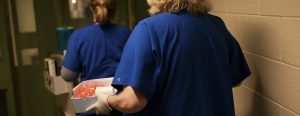DEAD END FOR FAILED EXPERT OPIOID CRISIS FIXES: IMPAIRING BRAIN INJURY BY UNRELENTING OVERDOSE WITH SERIAL EMERGENCY NARCAN REVERSALS
In the absence of prevention efforts or provision of evidence-based treatments, an expert-driven cycle of high-risk use, overdose, emergency Narcan revivals, and induced brain injury can only spiral downward
by Clark Miller
Published September 26, 2025
The problem – latent, looming and unseen – was perhaps most succinctly and simply foreseen by a San Francisco addiction professional reflecting on the toll of high-risk opioid use, overdose deaths, and desperate measures to moderate that worsening public health crisis with intensive campaigns to distribute and save lives with naloxone.
As reported in this post, observed by University of California San Francisco addiction expert Ayesha Appa,
“Reversing overdoses is not what we want. Optimally, what we want is preventing the overdose in the first place,” Appa said. “The cumulative effects of [lack of oxygen] on the brain are obviously not great.”
Indeed. “Preventing the overdose in the first place” is the rationale for, only possible mode of action, and alleged benefit of America’s expert approach to the crisis, steadily increasing dispensed amounts of the substitute opioids buprenorphine and methadone in San Francisco and just about everywhere else, over decades of increasing overdose deaths.
Let’s be clear about what we are facing. That’s never a bad idea.
The opioid crisis is worsening. It is not resolving.
That is established as true by a variety of bodies of evidence including the valid measures of trends in nonfatal opioid overdoses and in trends in incidence of opioid injection-related infectious diseases.
It is established by results of the largest-ever, $344 million NIH study of gold standard expert treatments implemented in communities, and confirmed again by secondary analysis of outcomes from that study.
And it is established by a large body of consistent evidence linking increases over time or comparing experimental settings in provision of America’s expert gold standard cures, that treatment failing to provide differential benefit in moderation of high-risk opioid use, instead associated with its worsening.
The reasons for that are established, largely as evidenced over decades of increasing use of medically-dispensed substitute opioids fueling illicit economies of high-risk use.
And established as predictable: a worsening crisis in the absence of any supported evidence-based treatments delivered by qualified clinicians in America’s multi-billion dollar “addiction treatment” industry.

So, what we are left with
in a persistently worsening epidemic are desperate, emergency, intensive naloxone campaigns that account entirely for recent drops in fatal opioid overdoses and are necessitated precisely due to increasing high-risk opioid use = expert gold standard treatment failure.
Those repeated Narcan revivals have become normalized, a safety net, a way of continuing high-risk opioid use and a way of life, a revolving door, effectively described here, and here, and elsewhere.
But are not a pathway to real (evidence based) treatment, as distinct from sham medical treatments fueling the crisis administered for an entirely non-medical condition, and distinct from a cronyism “addiction treatment” industry without elements of treatment established as effective or delivered by qualified professionals.
That reliance on community emergency Narcan reversals was never sustainable due to predictable, continuously evolving lethally complicating additions to street opioids like fentanyl of even more potent synthetic opioids, or tranquilizers, and other molecules that can defeat Narcan or require emergency medical attention and monitoring. That problem is exacerbated by the very naloxone campaigns that have, of necessity, acted as harm reduction as the only force moderating lethal ODs, effective because reversals are happening in communities by laypersons (when seconds count) and without resultant emergency attention, driven by disincentive for such attention. Those DIY, peer and layperson reversals have saved lives and dropped fatal OD numbers, but not sustainably.
And not sustainably due to cumulative overdose effects leading to or including HIBI: a diagnosed severe form of Hypoxic-Ischemic Brain Injury mounting in each user with each instance of brain oxygen and blood deprivation in an opioid overdose and reversal.
As noted in the original report in the Journal of General Internal Medicine (behind a paywall):
– An estimate of more than one-half million (560,000) nonfatal opioid overdoses in the U.S. in 2023, based on records of emergency medical services (EMS) responses.
We know that figure is a gross underestimate of total nonfatal opioid overdoses for that and ensuing years based on consistent reports from opioid crisis direct service providers, organizations involved in naloxone distribution, and news reports. The intensive, targeted, community-based naloxone campaigns that have been so successful in getting Narcan where it is needed in the hands of laypersons have had the effect of dramatically increasing overdose reversals that don’t involve medical services and don’t enter any database. Those phenomena and figures are described in most of the recent posts at ACD on those efforts in states and other locales (see, for example, list of links in this post).
– Using “nationally representative data” for years 2016 to 2021, HIBI was diagnosed in 5.1% of hospitalizations for opioid overdose. Mortality for hospitalizations with HIBI was high, 62.2%. HIBI patients were highly likely to be discharged to a skilled nursing facility (47%) or to experience “severe loss of functioning (87%).
The researchers concluded that “HIBI hospitalizations were highly mortal morbid and costly, and survivors frequently required additional medical services at discharge.
HIBI is the tip of an iceberg
As grim as that portrayal is and apart from its acuity and severity, HIBI is a diagnosis that represents the severe end of effects of overdose-related hypoxia and ischemia and as such does not capture the magnitude of effects happening on American streets and in communities more pervasively. From an internet-searched summary –
- Hypoxia vs. Anoxia: While HIBI often involves anoxia (total lack of oxygen), overdose-induced breathing suppression more often causes hypoxia (insufficient oxygen). Less severe or fluctuating hypoxia may not produce the acute, visible damage characteristic of HIBI, but it can still affect brain cells.
- Subtle but persistent deficits: Even if a survivor is revived quickly, any duration of oxygen deprivation can lead to long-term cognitive and neurological problems that may not be severe enough for a formal HIBI diagnosis.
- Targeted damage: Some areas of the brain, such as the hippocampus (responsible for memory) and the cerebral white matter, are particularly sensitive to low oxygen levels. Damage to these areas may result in specific deficits without the widespread injury associated with a HIBI diagnosis.
- Cumulative effects: Research suggests that repeated opioid overdose events, even non-fatal ones, increase the risk of long-term damage due to repeated and prolonged hypoxia. This cumulative effect can cause damage to white matter over time.
That’s AI-generated, so don’t believe it. Seriously.
Except in this case, do take it very seriously, because the research supports that summary.
From this 2019 research review, for example, by the U.S. Department of Health and Human Services, Office of the Assistant Secretary for Planning and Evaluation.
NFOO = Non-Fatal Opioid-involved Overdose
OIRD = Opioid-Induced Respiratory Depression
Differences in Effects of Overdoses between Single, Multiple, and Recurring Opioid Overdose
Differential health complications associated with single, multiple, and recurring opioid overdose were identified. Most notable is the identification of a strong correlation between prior and future NFOO events, as persons experiencing a single NFOO event were found more likely to experience a future overdose event in their lifetime; ergo, a person’s overdose risk increases with every overdose they experience (Olfson et al., 2018; Darke et al., 2014). NFOO victims who experience multiple/recurring opioid overdose are shown to be at greater risk for long-term physical and cognitive consequences resulting from OIRD than persons experiencing a single overdose. (Darke et al., 2007). Repeatedly subjecting the brain to a deficiency of oxygen is shown to cause damage to the white matter of the brain (King, Morris, & Schahmann, 2015), and the risk for neurophysiological consequences increases with the both number of times a person experiences a hypoxic/anoxic event and the duration of each event (Beeskow et al., 2018).
In plain language and as increasingly described for American communities, (here, here, and here for example) the desperately needed, intensive, successful campaigns that have flooded locales with naloxone are having foreboding collateral effects. Rather than – as for high-risk users diagnosed with HIBI – being hospitalized, placed in a care facility, or incapacitated, opioid overdose survivors are being revived to walk away, access opioids again, overdose and be revived again.
The types of less acute and still profoundly impactful cumulative effects are messaged in a flyer produced by NASHIA, the National Association of State Head Injury Administrators.
The critically important point here, the key takeaway
is that as life-saving reversals by naloxone and other agents become increasingly necessary as harm reduction against lethal medical-model gold standard treatments, become normalized and celebrated as gains against the worsening epidemic, the capacity of victims of those expert treatments to engage effectively in and benefit from actual evidence based treatments is diminished with each nonfatal overdose.
Emotional regulation, memory, planning, problem solving, tolerance of frustration, functioning and emotional reward in relationships, ability to achieve goals and feel rewarded by competence – all those experiences and more are degraded each time a high-risk user trades their medically supplied “subs” (Suboxone) for some fentanyl, overdoses, and loses some increment of functioning, some part of self.
“Reversing overdoses is not what we want. Optimally, what we want is preventing the overdose in the first place,” Appa said. “The cumulative effects of [lack of oxygen] on the brain are obviously not great.”
“Preventing the overdose in the first place” is not possible without radical, sweeping change that takes lethal power out of the control of lethal systems that show no signs of acknowledgment, let alone change.
Meanwhile, deaths mount, illness is inflicted, and naloxone’s days are numbered.









